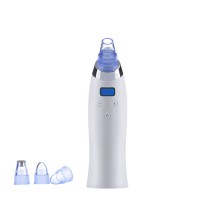-
Phone
+86- 111****
-
Address
Boluo county dragon Lotus Lake Village Town Industrial Park, China
-
E-mail
LatestProducts
The processing and application of industrial bristle bristles
In various industries of society, industrial brushes are widely used, almost including industries such as glass, textile printing and dyeing, steel plates, automobiles, pharmaceuticals, electronics, packaging, printing, household appliances, doors and windows, furniture, cigarettes, food, beverages, fruits, vegetables, environmental protection, and other industries. They are used for cleaning, dust removal, polishing, sealing, water absorption, and high-temperature strip conveying of products;
The bristle bristles are an important component of industrial bristles, such as the special brush rollers for singeing machines and the opening rollers for dividing machines in the textile industry, which are mostly used for bristle bristles;
The quality standards of pig bristles, whether black or white, can be classified as first-class products as long as they meet the following quality standards. If one or two items are missing, the slightly inferior quality will be classified as second-class products, and if two or more items are missing, it will be classified as third-class products. 1. Quality standard for black bristles: the color is pure black and shiny; No yellow tips: thick and sturdy hair roots; The fork tip is not deep; Yuan miscellaneous hair; Not damp; No flesh skin. Impurities such as ash and slag. 2. Quality standard for white bristles: without yellow or black; Less oil and hair; Same as other quality standards for black bristle.
The processing process of bristle bristles:
1. Process raw materials into a pile or mixed bristle, classify pig hair according to its color, and remove belly hair, tail hair, moldy hair, and debris; After fermenting the selected pig hair with water for 24 hours, remove and pound the meat skin to disperse the fur; Wash the loose pig hair with water, and then use an iron comb to remove the fluff, dander, and other debris and wash them thoroughly; Dry and sun dry the clean hair to form a fur shop, which can be sold.
2. The woolen cloth is made into semi-finished products and tied to small wooden boards with ropes. It is steamed in a pot to straighten the bent strips and increase luster, remove fishy dirt, and achieve disinfection and sterilization effects.
3. Use a comb to comb and level the finished product from root to tip, first long and then short: gently rub with both palms to straighten the head and tail; After grading and bundling, match all levels of bristles appropriately according to regulations, and then comb them evenly with a comb; After initial inspection and re inspection, the root is ground, and the protruding hairs are cut off by leveling them with wooden boards; Packaging shall be carried out upon passing the inspection.
The bristle bristles are an important component of industrial bristles, such as the special brush rollers for singeing machines and the opening rollers for dividing machines in the textile industry, which are mostly used for bristle bristles;
The quality standards of pig bristles, whether black or white, can be classified as first-class products as long as they meet the following quality standards. If one or two items are missing, the slightly inferior quality will be classified as second-class products, and if two or more items are missing, it will be classified as third-class products. 1. Quality standard for black bristles: the color is pure black and shiny; No yellow tips: thick and sturdy hair roots; The fork tip is not deep; Yuan miscellaneous hair; Not damp; No flesh skin. Impurities such as ash and slag. 2. Quality standard for white bristles: without yellow or black; Less oil and hair; Same as other quality standards for black bristle.
The processing process of bristle bristles:
1. Process raw materials into a pile or mixed bristle, classify pig hair according to its color, and remove belly hair, tail hair, moldy hair, and debris; After fermenting the selected pig hair with water for 24 hours, remove and pound the meat skin to disperse the fur; Wash the loose pig hair with water, and then use an iron comb to remove the fluff, dander, and other debris and wash them thoroughly; Dry and sun dry the clean hair to form a fur shop, which can be sold.
2. The woolen cloth is made into semi-finished products and tied to small wooden boards with ropes. It is steamed in a pot to straighten the bent strips and increase luster, remove fishy dirt, and achieve disinfection and sterilization effects.
3. Use a comb to comb and level the finished product from root to tip, first long and then short: gently rub with both palms to straighten the head and tail; After grading and bundling, match all levels of bristles appropriately according to regulations, and then comb them evenly with a comb; After initial inspection and re inspection, the root is ground, and the protruding hairs are cut off by leveling them with wooden boards; Packaging shall be carried out upon passing the inspection.
